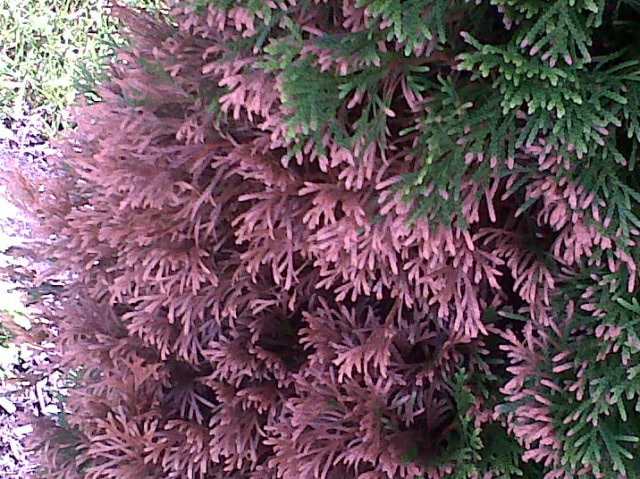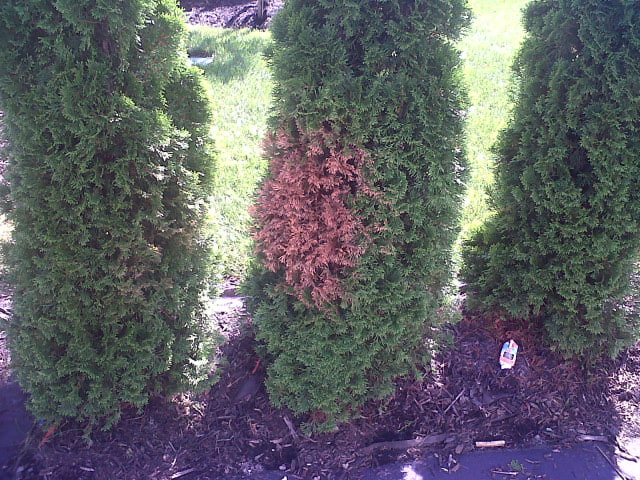Question
 close up
close up 
I planted a lot of emrald green arborvities last year around july . They are all thriving, however one tree has suddenly devoleped a large brown spot on the leaves. The leaves are soft and not wilted at all. It looks like a disease,because it seems to spraed from the tips of the leaves downwards, and is spreading to another tree next to it, so far only the tips of the ajacent tree are brown but I need to stop the spreading quickly. Help!
AnswerSounds like a disease called Seiridium canker. The under lying cause is stress on the tree by usually weather condition.
Seiridium canker, caused by Seiridium unicorne, is probably the most damaging disease on Leyland cypress. Plants of all sizes and ages are affected. Cankers may form on stems, branches and in branch axils causing twig, branch or, at least on smaller plants, stem dieback. Cankers appear as sunken, dark brown or purplish patches on the bark, often accompanied by extensive resin flow. It should be noted that resin exudation often occurs from the branches and stems of otherwise healthy plants of Leyland cypress thus resin flow by itself is not a diagnostic characteristic for Seiridium canker. Scattered twigs or branches killed by the fungus turn bright reddish brown, and are in striking contrast to the dark green healthy foliage. Fruiting bodies of the fungus appear on the bark surface of the cankers as small circular black dots barely visible to the naked eye. Spores of the fungus are spread to other parts of an infected tree, or from tree to tree by water splash from rain or irrigation. The fungus also can be spread from tree to tree on pruning tools. Long distance spread appears to be through the transport of infected cuttings or plants.
Currently there are no chemical control measures recommended for the disease in the landscape or nursery. Avoiding water stress and tree wounding may reduce infection. Infected branches or twigs should be pruned and destroyed as soon as symptoms are noted. Prune at least one inch below the canker, and sterilize the pruning tools between cuts by dipping them in rubbing alcohol or in a solution of 1 part chlorine bleach to 9 parts water. Tools should be cleaned and oiled after using bleach to prevent rusting. Severely affected plants should be removed and destroyed.
.







